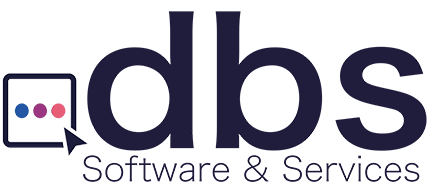
Going Beyond the Surface: Why Forms Are Much More Than Just a Form
Forms are often overlooked as mundane tools for data collection, but they hold immense significance in various domains. To users, a well-designed form is an intuitively simple way to provide information to another party in order to achieve a desired result. To the form publisher, the form is a way to streamline the interaction with the user and collect the information required to provide a service. In any scenario, forms represent a critical touchpoint between the service provider and user, and if it were only for that reason, they are an essential component of most end user interactions… However, their impact goes far beyond the surface.
In this blog we will discuss some key topics for any organization to consider when designing and implementing a new form. We will explore why electronic forms exist and are important, the need to understand the process before designing a form, what distinguishes a good form from a bad one, non-form elements to consider in designing a form, key questions to ask before building a form, and what tools are available to make the tasks of designing and deploying electronic forms easier and faster.
- Why Electronic Forms Exist and Are Important: Electronic forms have gained popularity due to their numerous advantages over traditional paper forms. They offer the ability to collect and organize data efficiently, reduce manual errors, and automating repetitive workflows. By transitioning to electronic forms, organizations save time and resources previously spent on printing, distributing, and storing physical forms. Moreover, electronic forms enable seamless integration with databases, analytics tools, and other systems, facilitating data analysis and decision-making processes.
- The Need to Understand the Process Before Designing the Form: Designing an effective form requires both a keen understanding of the underlying process and the information that needs to be captured. Without this understanding, a form may fail to collect relevant data or even introduce unnecessary complexity. By comprehending the process first, its stakeholders, and their requirements, you can design a form that aligns with the intended purpose, ensures usability, and enhances the overall user experience.
- What Makes a Good Form vs. a Bad One: A good form exhibits several key characteristics that enhance its usability and effectiveness. It should be concise, well-organized, and visually appealing, with clear instructions and an intuitive layout. A good form minimizes the cognitive load on users, employing logical sequencing and appropriate input elements. Additionally, it provides informative error messages and validation rules to prevent user frustration. Conversely, a bad form is typically cluttered, confusing, or overwhelming, leading to user frustration, abandonment, or inaccurate data.
- Non-Form Elements to Consider in Designing a Form: While the form is crucial, several non-form elements significantly impact the overall user experience. These include the surrounding context, such as the webpage or application hosting the form. Consistent branding, coherent design elements, and easy navigation contribute to a cohesive user experience. Accessibility considerations, such as providing alternative text for images, ensuring proper color contrast, and supporting assistive technologies, are also vital. Moreover, optimizing form performance, responsiveness across devices, and compatibility with various browsers is essential.
- Key Questions to Ask Before Building a Form: Before embarking on form development, it is essential to ask important questions that help clarify objectives and ensure a successful outcome. Some questions to consider include:
- What is the form’s purpose, and what data needs to be collected?
- Who are the primary users, and what are their characteristics and preferences?
- What are users’ potential pain points or challenges in the existing process?
- How can the form be optimized for efficiency, accuracy, and user satisfaction?
- Are there any legal or compliance requirements to consider?
- How will the data collected be processed, stored, and secured?
- How can user feedback and iterative improvements be incorporated into the form’s design?
- Determining what tool to use for designing and deploying electronic forms: There are many solutions available to help with form creation and deployment. Selecting the right one will depend mainly on the type of organizational use the form will have. If you are an individual or small business needing to deploy only a few simple forms, a self-service app based solution should suffice. However, if your organization is more mature and/or you need to deploy many forms with varying workflow complexities, then you will be better served by a scalable enterprise forms solution that supports more complex use cases such as those involving payments, e-signatures, workflows, and integrations via API.
In conclusion, forms are much more than just a means of data collection. Electronic forms have become vital tools in today’s digital landscape, improving efficiency, accuracy, and user experience. By understanding the process, designing effective forms, considering non-form elements, and asking the right questions, organizations can harness the full potential of forms and unlock valuable insights for better decision-making.
dbs LiveForms is a powerful and easy-to-use forms solution designed to help enterprises create and manage all types of electronic forms and manage them from a single platform. LiveForms streamlines information capture and automates the flow of information needed for decision-making. Collect information from any device, wherever users are, orchestrate workflows associated with the forms, and manage submissions – all from one secure system. With dbs LiveForms, users can fill out forms, including attachments, provide e-signatures, pay for services, and more.The completed forms are then routed through the necessary approvals process and seamlessly passed to any other systems at the right step in the flow via the systems API.
For more information about dbs LiveForms or to get started for free click here.

dbs Software & Services (dbs) is a long-standing provider of document management and process automation solutions for education and business, and the exclusive provider of Tessi Docubase® in North America.
Tessi Docubase® is an enterprise-grade modular, secure, and easy-to-use document management system that seamlessly integrates with Business Information Systems. Its secure architecture and a broad range of features make it the perfect solution for a wide range of enterprises and use cases.
dbs LiveForms, is a low-code Business Process Automation platform. Its sole focus is simplifying complex processes by automating repetitive steps – from data capture to alerts, notifications, email confirmations, and everything in between quickly, without involving a programmer.
dbs eSign is a cloud-based electronic signature solution that allows users to manage the signing process for a document, from upload to signing and sealing, from any mobile device or computer.


Leave A Comment